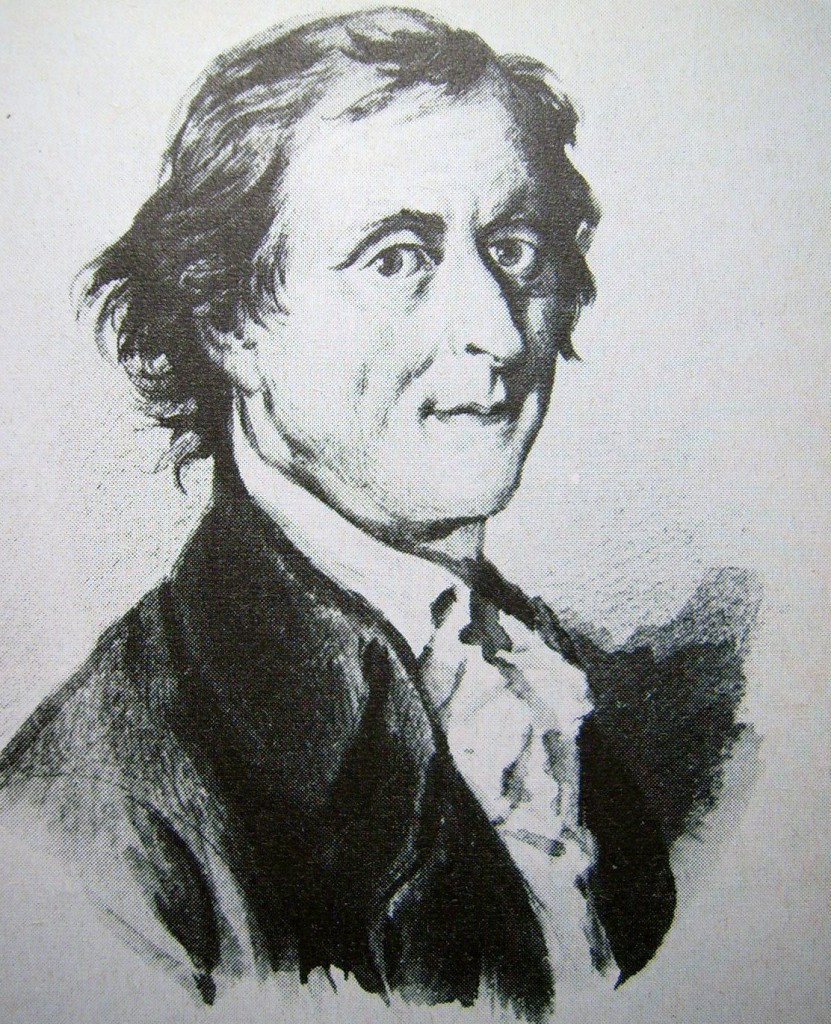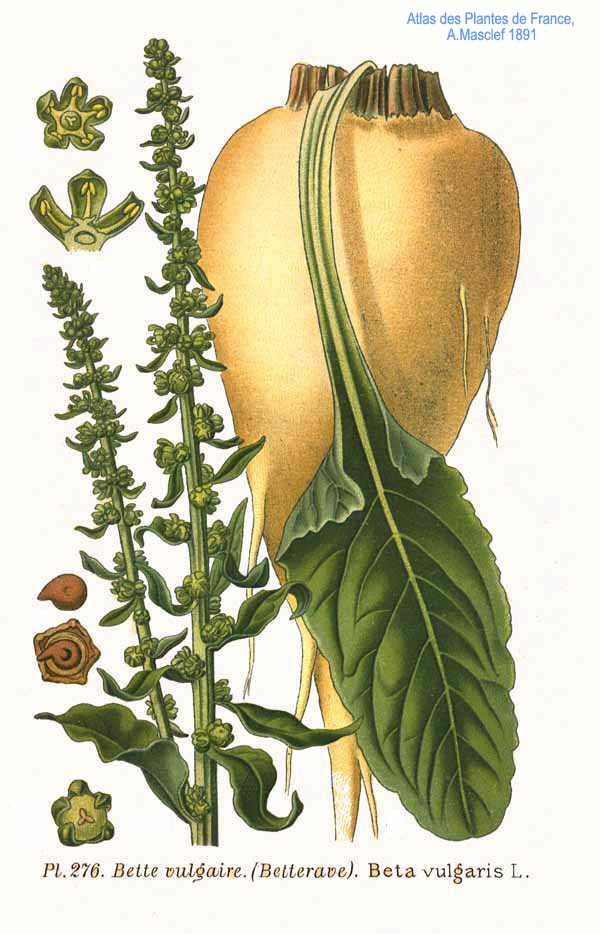
Franz Carl Achard (1753-1821)
On April 28, 1753, German (Prussian) chemist, physicist and biologist Franz Carl Achard was born. Achard‘s principal discovery was the production of sugar from sugar beets. In 1802, Achard opened the world’s first sugar producing industry plant in Prussia. Just imagine, the world harvested 250,191,362 metric tons of sugar beets in 2013, with Russia being the world’s largest producer. And only about 20% of the world‘s sugar production comes out of sugar beets. Sugarcane accounts for 80% of sugar produced and is the world‘s largest crop by production quantity.
A Brief History of Sugar
Sugar has been produced in the Indian subcontinent since ancient times. It was not plentiful or cheap in early times and honey was more often used for sweetening in most parts of the world. One of the earliest historical references to sugarcane is in Chinese manuscripts dating back to 8th century BC that state that the use of sugarcane originated in India. Sugar remained relatively unimportant until around the 5th century AD the Indians discovered methods of turning sugarcane juice into granulated crystals that were easier to store and to transport. Although already Macedonian soldiers in the aftermath of Alexander the Great‘s campaign to India carried the “honey-bearing reeds” home with them, sugarcane remained a little-known crop in Europe for over a millennium. Crusaders brought sugar home with them to Europe after their campaigns in the Holy Land and in the 15th century Venice had become chief sugar refining and distribution centre in Europe. But sugar was a luxury in Europe until the 18th century, when it became more widely available.

Sugar Beet (Beta Vulgaris)
The Story of Franz Achard
Then the story of Franz Archard is about to begin. Achard was born in Berlin, the son of preacher Max Guillaume Achard, descendant of Huguenot refugees and his wife Marguerite Elisabeth. He studied physics and chemistry in Berlin and became interested in sugar refining through his stepfather. At the age of 20, Achard entered the “Circle of Friends of Natural Sciences” and met the chemist Andreas Sigismund Marggraf, then director of the physical classes at the Royal Academy of Sciences. Achard studied many subjects, including meteorology, evaporation chillness, electricity, telegraphy, gravity, lightning arresters, and published in German and French.
Directly Reporting to the King
Achard was a favorite of King Frederick II of Prussia, and directly reported to the King on his research twice a week. About a study on the influence of electricity on mental capabilities, Frederick II was reported to have said: “If he is able to provide reason for the half wits in my Prussian states using electricity, then he is worth more than his own weight in gold.“
The Silesian Sugar Beet
In 1776 Achard was elected to the Royal Academy of Sciences at Berlin. For his discoveries in the acclimatisation of tobacco to Germany, the king granted him a lifetime pension of 500 taler. Achard revived the discovery by Marggraf in 1747 that beetroots contained sugar in concentrations of 1.3-1.6%. He also demonstrated that sugar could be extracted from beets that was the same as that produced from sugarcane. Franz Carl Achard evaluated 23 varieties of mangel-wurzel for sugar content and selected a local race from Halberstadt in modern-day Saxony-Anhalt, Germany. Moritz Baron von Koppy and his son further selected from this race for white, conical tubers. The selection was named ‘Weiße Schlesische Zuckerrübe’, meaning white Silesian sugar beet, and boasted about a 6% sugar content. This selection is the progenitor of all modern sugar beets (beta vulgaris).
The First Sugar Beet Refinery
Frederick William III, king of Prussia, took a keen interest in the making of sugar from beets, and, after having, convinced himself that Achard was on the right track, he bought the crown land at Cunern, Silesia, for exploitation on a large scale.[1] In 1801, with the support of King Friedrich Wilhelm III, Achard opened the first sugar beet refinery at Gut Kunern near Steinau, Silesia, Prussia. Achard’s new process of obtaining sugar was simple but costly. It consisted of boiling specially cultivated, white Silesian beets and then pressing them to extract a sugary liquid. This, liquid, added to that obtained from a second pressing, was boiled to remove excess water and then placed in an oven at moderate temperature to allow crystallization. After a crust had formed, the liquid was cooled and the sugar was separated by filtration. The muscovado, or raw sugar, could be refined to any desired degree of purity by recrystallization. The by-products were beet pulp, which could be used for cattle fodder, and molasses, which could be made into spirits.[2]
![First Beet-Sugar Factory in the World — Built at Cunern, Silesia, 1802 [1]](http://scihi.org/wp-content/uploads/2016/04/FirstBeetSugarFactory500px.jpg)
First Beet-Sugar Factory in the World — Built at Cunern, Silesia, 1802 [1]
Not a Luxury Product anymore
In 1802, the refinery processed 400 tons of beets with a degree of efficiency of 4%. Other refineries were soon built, but in 1806 Achard’s plant was burned down by Napoleon’s war and in 1810 it was rebuilt on a small scale. Embargoes by Napoleon kept cane sugar imports away from Germany and thus the growing and refining of sugar beets became highly important for the Prussian government. Refineries also appeared in Bohemia, Augsburg and in 1811 in France. France itself built many refineries and was only in later years surpassed by Prussia. English sugar merchants offered Achard 200,000 taler to declare his experiments a failure but he refused. With Achards discovery, sugar was no longer a luxury product, but became a necessity, due to the embargoes. Achard taught classes to have a large number of sugar beet growers and the specially developed sugar beets became available for everyone.
Bankrupcy and Death
Due to Archard’s financial difficulties as a result of several fires in 1806, his refineries were declared bankrupt in 1815. He died, destitute, in 1821 in Wohlau. By 1840 about 5% of the world’s sugar was derived from sugar beets, and by 1880 this number had risen more than tenfold to over 50%
Carbohydrates : 2.Family of Aldoses and Ketoses, [8]
References and further Reading:
- [1] Beet Sugar in Europe, from Something About Sugar: Its History, Growth, Manufacture and Distributions (1917)
- [2] “Achard, Franz Karl.” Complete Dictionary of Scientific Biography. 2008. Encyclopedia.com
- [3] Frank Clay Cross: “Sugar From Beets” Popular Science Monthly, March 1935
- [4] Franz Achard at Wikidata
- [5] Achard (1799) “Procédé d’extraction du sucre de bette” (Process for extracting sugar from beets), Annales de Chimie, 32 : 163-168.
- [6] Wolff, G. (1953). “Franz Karl Achard, 1753–1821; a contribution of the cultural history of sugar”. Medizinische Monatsschrift. 7 (4): 253–4. PMID 13086516.
- [7] Gough, J. B. (1970). “Achard, Franz Karl”. Dictionary of Scientific Biography. 1. New York: Charles Scribner’s Sons. pp. 44–45. ISBN 0-684-10114-9.
- [8] Carbohydrates : 2.Family of Aldoses and Ketoses, All Explained @ youtube
- [9] Timeline of German Chemists, via DBpedia and Wikidata






Pingback: Whewell’s Gazette: Year 2, Vol: #38 | Whewell's Ghost